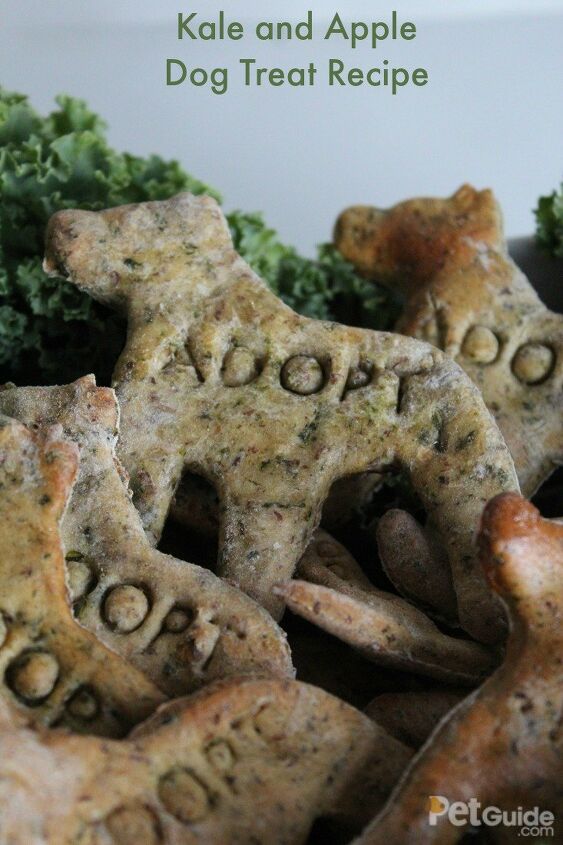
Wouldn’t it be great if you dog loved leafy greens as much as he loves treats? Yeah, it’s a pipe dream, but what if you could combine the two to trick your dog into eating a salad staple? We went ahead and did that with our Kale and Apple Dog Treat Recipe. Using kale as our focus ingredient, this leafy green is high in beta carotene, vitamin K, and vitamin C, as well as carotenoid pigments. On top of that, kale is low in calories, and is a source of calcium, magnesium, potassium, and beta carotene.
Kale and Apple Dog Treat Recipe

Makes about 25 treats
Ingredients:
1 cup kale, chopped
1 apple, grated
2 ½ cups all-purpose flour
¼ cup ground flax seed
1 egg
½ teaspoon cinnamon
¼ cup vegetable broth
Directions:
Nutritional Benefits of Kale
As we previously mentioned, kale is packed with nutritional value including beta carotene, vitamin K, vitamin A, vitamin C, calcium, magnesium, and potassium. For this reason, many refer to the leafy green as a ‘nutritional power-house’. All these vitamins and nutrients make kale a good choice for improving your dog’s immune system, fighting inflammation, strengthening the heart, supporting bone health, and losing or maintaining weight. With all these aspects of the body in check, your dog will start to experience higher energy levels, the result of better health.
However, as with everything, you should only feed kale in moderation. Too much of a good thing is a very real concern! If your dog is consuming too much kale and, as a result, eating fewer protein-rich foods, it can lead to nutritional deficiencies. Instead, it should be incorporated as one piece of a larger overall nutritional plan.
When cooking with kale, there are a few details to consider. The most important being that every dog is different. To determine the best way to prepare kale for your dog, you will need to watch how your dog responds to this new addition to their diet. Kale can be served cooked, steamed, pureed, or chopped. Try experimenting with adding kale to your dog’s food and cooking into treats like the recipe above to see what your dog prefers. However, when preparing your dog’s food, avoid any herbs, spices, or oils that can be toxic or unsettling for your dog’s digestive system.














